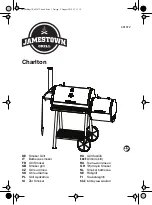
Refrigerated Storage Design Guide
VESDA
®
Table 1 Continued.
Component
Key Design Considerations
Detailed Information
Detectors must be installed
outside the protected zone.
Section 1.4
Detectors must be installed
inverted, to prevent water
entering them via the pipe
network.
Sections 3.4 and 4.4
Sampled air can be warmed
where necessary. Consider a
method.
Sections 5.1 and 5.2
VESDA Detector
Consider the battery backup
required.
Section 5.5
Integration With Pre-action
Suppression
Installing VESDA with a pre-
action sprinkler systems.
Section 5.6
2. Background
Information
2.1
Fire Safety Considerations In Refrigerated Storage Facilities
According to statistics, released by the NFPA
[3]
, the major fire risks within a refrigerated storage
facility arise from the following:
•
Electrical or mechanical faults in conveyor and other transport equipment.
•
Electrical equipment, wiring and other equipment housed in the roof space.
•
The lighting system.
•
Hot spots resulting from maintenance operations.
•
Discarded cigarette butts.
•
Arson.
Due to the large amounts of plastic present in this type of facility, in the form of packaging
materials, a fire would produce large amounts of highly toxic and corrosive smoke which would
damage assets and endanger personnel. The large amounts of fuel available, in the form of stock
and the highly flammable light weight sandwich panels from which such facilities are constructed,
would also cause fires to spread quickly from one area to another. Table 2 provides guidelines for
those areas in a refrigerated storage facility that it is essential to protect.
Table 2 – Guidelines for areas to be protected.
Area Essential
Recommended
Optional
Freezers/Chiller Rooms
9
Coolers
9
Plant and Maintenance
Areas
9
Return Air Path Under the
Protected Area
9
Loading Bays and
Surrounding Areas
9
Office/Monitoring Area
9
Ceiling/Roof Voids
9
Within Racks
9
2









































